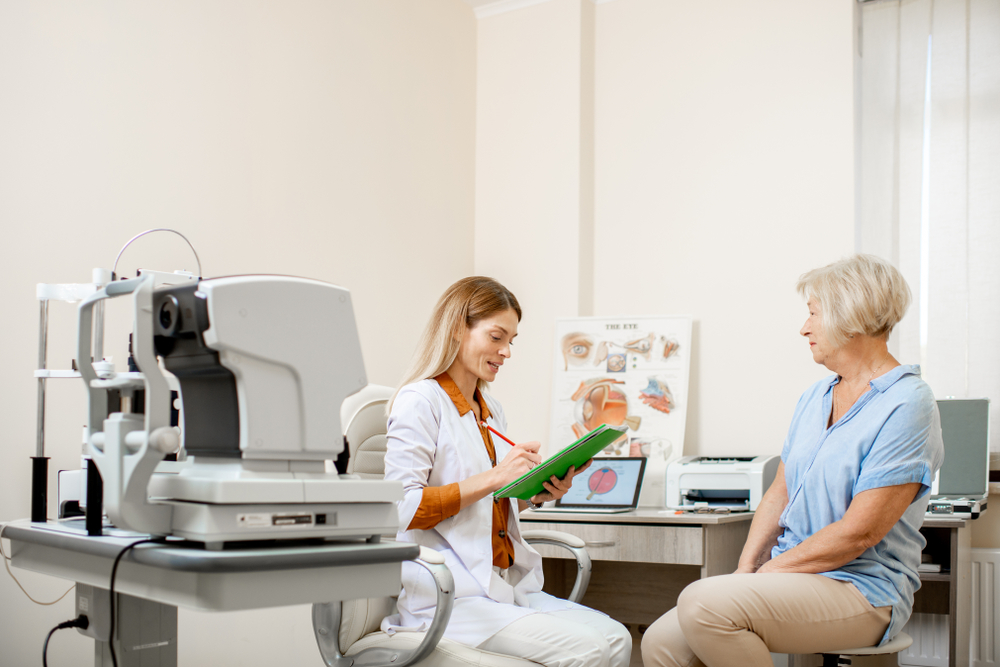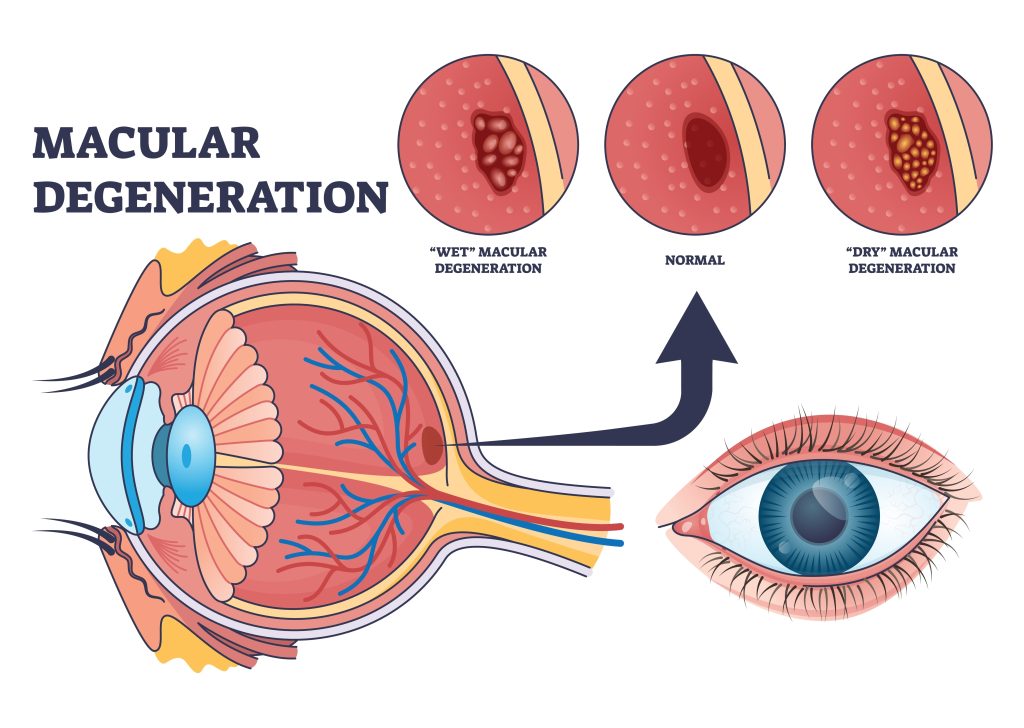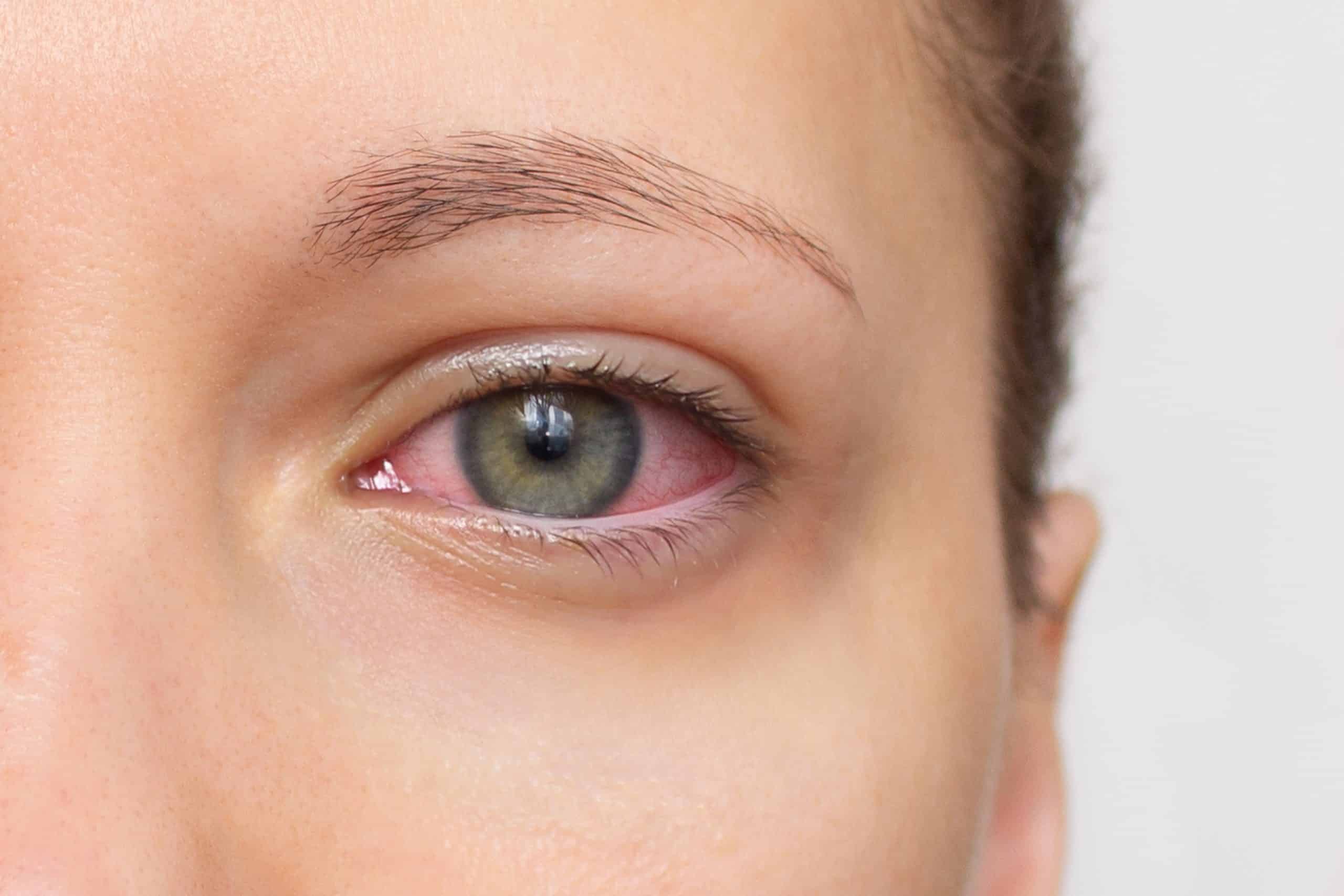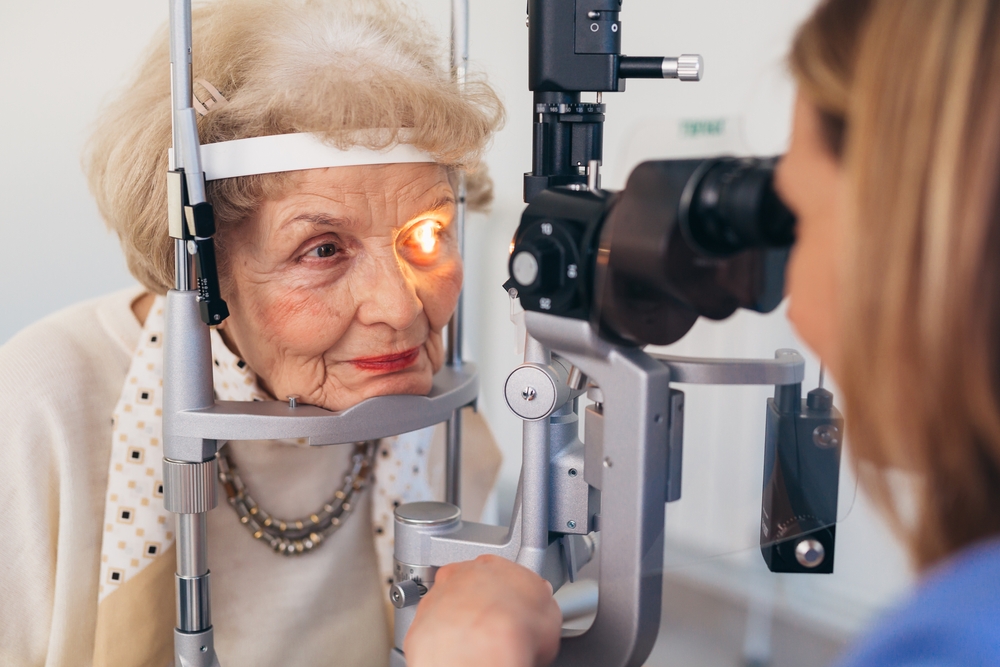Like other common eye conditions that primarily affect older adults, such as cataracts or glaucoma, macular degeneration can take years to fully develop. Because changes to vision caused by the condition can be subtle, many people are unaware they have it until it is diagnosed during a comprehensive eye exam.
When faced with a macular degeneration diagnosis, the first question people often ask is whether it can be cured. Keep reading to learn more about macular degeneration, including its causes, treatment options, and what you can do to protect your vision.
What is Macular Degeneration?
Macular degeneration, commonly known as age-related macular degeneration (AMD), is a progressive eye condition that affects the macula, the central part of the retina responsible for detailed central vision. If left untreated, AMD can cause irreversible partial or total loss of central vision.
Although there is no cure for AMD, identifying and treating it in its early stages can help slow progression and prevent further vision impairment. Regular comprehensive eye exams are critical for monitoring the health of the retina and macula, especially in older adults.
What are the Types of Macular Degeneration?
There are two main types of AMD: dry (non-neovascular) and wet (neovascular). Dry AMD is the most common type, accounting for most cases.
Dry AMD
Dry AMD occurs when protein deposits, known as drusen, build up under the macula, causing macular cells to thin and die off. The formation of drusen often occurs naturally as people age.
There are three stages of dry AMD: early, intermediate, and advanced. People with this type of AMD may not notice changes to their vision until the condition has reached its intermediate stage, when central vision loss can become more noticeable.
Wet AMD
Wet AMD is a less common but more severe type of the condition. This type of AMD can cause a sudden onset of symptoms and significant damage that can potentially result in complete and permanent vision loss.
Wet AMD occurs when abnormal blood vessels grow under the macula. The abnormal blood vessels can leak fluid or blood, affecting the ability of the macula to function properly.
What are the Symptoms of Macular Degeneration?
As AMD develops, it often causes the following symptoms:
- Changes to the quality of vision, including blurry or wavy vision
- Distorted vision, such as seeing straight lines as bent
- Impairment or loss of central vision
- Changes in color perception
- Difficulty adapting to low light conditions
- The need for brighter light for reading or close work
With dry AMD, these symptoms typically develop slowly and worsen over time. In wet AMD, these symptoms come on all at once and are more severe.
How is Macular Degeneration Diagnosed?
During a comprehensive eye exam, your ophthalmologist will examine the retina after pupil dilation. If your eye doctor suspects there may be something wrong with your retina, they may conduct further testing, like angiograms, and test your vision using an Amsler grid.
While vision tests and pupil dilation are often routine parts of a typical eye exam, angiograms and an Amsel grid specifically test for signs of retinal conditions. In an angiogram, a special dye and camera visualize blood flow in the retina. During a test with an Amsler grid, a patient looks at a grid of straight lines to detect visual distortion or blank spots, which can be an indication of AMD.
Who is Most at Risk for Developing AMD?
While anyone can develop AMD, certain people are more at risk. The risk factors for developing AMD include:
- Age: The risk of developing AMD increases significantly after 50.
- Family History: People with a family history of AMD are more likely to develop the condition.
- Gender: Women are more likely to be diagnosed with AMD than men.
- Underlying Health Condition: Complications caused by underlying health conditions, like high blood pressure and diabetes, increase the risk of AMD.
What are the Treatments for Macular Degeneration?
Although research is ongoing, there is currently no cure for AMD. However, there are treatment options that can preserve the quality of existing vision and prevent further vision loss.
Treatments for AMD include:
- AREDS2 Nutritional Supplements: These supplements may be able to slow the progression in intermediate to advanced dry AMD.
- Low Vision Aids: Tools like magnifiers and special glasses can help to maximize remaining vision.
- Anti-VEGF injections (e.g., Lucentis, Eylea, Avastin): This treatment is often given to patients with wet AMD to stop abnormal blood vessel growth and fluid leakage.
- Photodynamic therapy (PDT): PDT combines a light-activated drug with laser treatment to target abnormal vessels in cases of wet AMD.
- Laser photocoagulation: This treatment might be used to seal leaking blood vessels in some wet AMD cases.
- Emerging Treatments: AMD researchers are currently investigating gene therapy, stem cell therapy, and retinal implants as possible treatments for all types of macular degeneration.
Can Macular Degeneration Be Prevented?
While there is no proven way to completely prevent AMD, healthy lifestyle choices can reduce a person’s risk for developing the condition or slow its progression. These include:
- Not smoking, or quitting if you currently smoke
- Eating a diet rich in leaf greens, colorful fruits, and omega-3 fatty acids
- Maintaining a healthy weight
- Managing blood pressure and cholesterol
- Protecting your eyes from sources of UV light
- Scheduling regular comprehensive eye exams
AMD has no cure, but early diagnosis can limit vision loss and help prevent blindness. Catching the condition early at an annual comprehensive eye exam can protect the health of your eyes and the quality of your vision from developing AMD.
Are you experiencing any changes in your vision? Schedule an appointment at Eye Center of Texas in Houston, TX, today!












